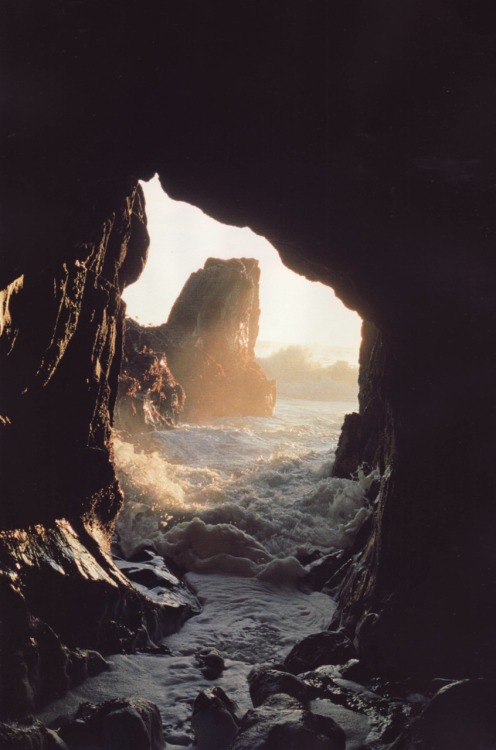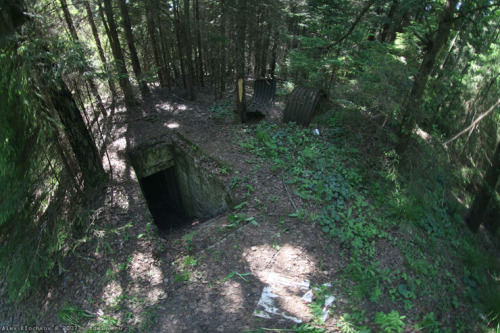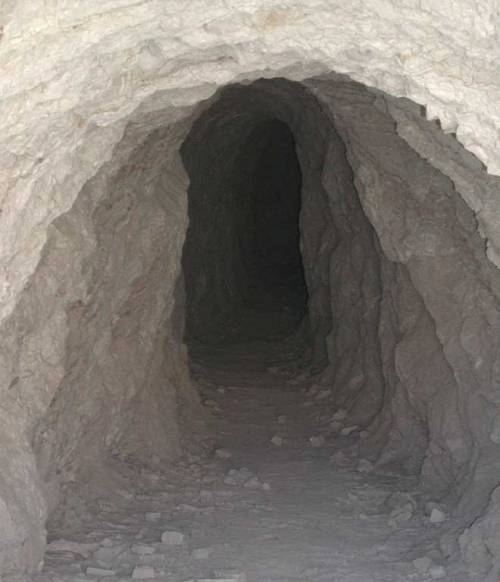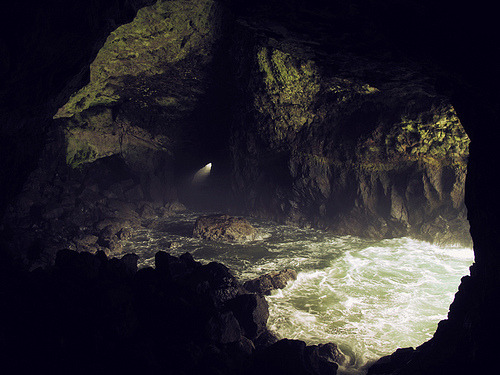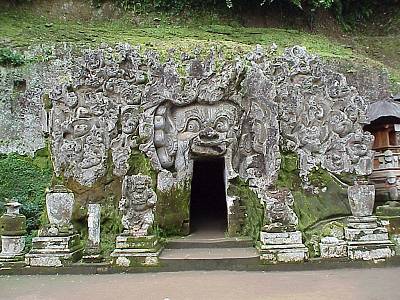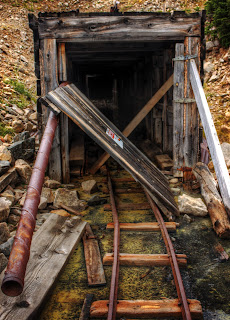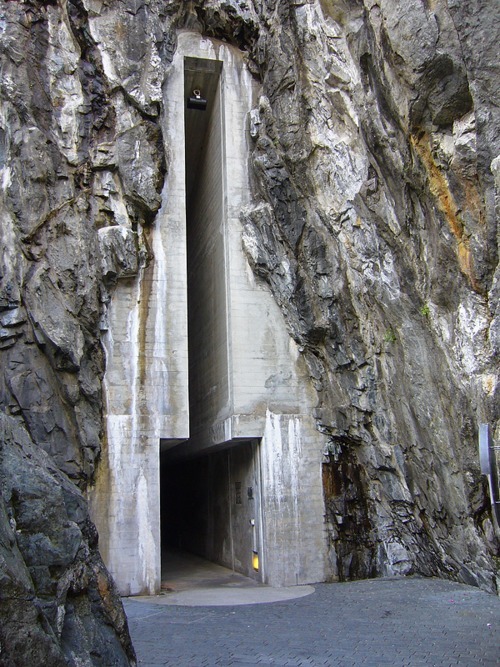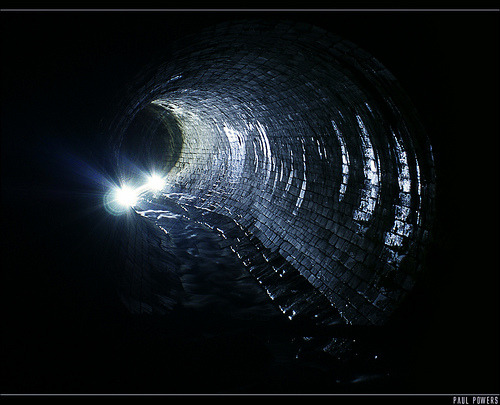If you're looking to gain a deeper understanding of your game system (whatever it might be) a useful tool is to find a fight scene from a movie that's appropriate to the genre and then model it using the game you play.
7th Sea was written by the good people at AEG (makers of Legends of the 5 Rings), and uses d10s and the roll & keep system. I love the genre, and I love the mechanics of the game, so I decided some time back to model a fight sequence out of The Princess Bride. The fight sequence I chose was the final showdown between Count Rugen and Inigo. This is after Inigo has beaten off hordes of mooks, has chased Rugen into the dining hall, and then been struck by a well thrown dagger from Count Rugen.
Inigo has 1 Dramatic wound due to the knife in his gut from Count Rugen's earlier throw. My 7th Sea house rule states that players lose one die for every Dramatic Wound up until they hit the number of Dramatic Wounds equal to their Resolve, at which point the normal rules of 7th Sea come in to play. Since Inigo has one Dramatic Wound he now loses one die on each of his rolls (so an attack that would normally be r7k4 is now r6k4). He has 3 Drama Dice available to him (2 from his lowest Trait of Brawn and 1 from earlier actions in the sequence).
Inigo leans against the wall, his hand shoved into his stomach to keep his blood from spilling all over the floor. Through the pain he can see Count Rugen just out of reach. "To come so far, only to fail now?" What must his father think of his quest now?
"I've got to get up!" he tells himself, and he forces himself to his feet.
Count Rugen looks at him "Are you still trying to win?", he asks scornfully, as Inigo falls back against the wall again.
"You've got an overdeveloped sense of vengeance," spits Rugen, as he draws his sword. "It's going to get you into trouble someday."
Combat begins with the two rolling iniative. Rugen does not have any of his Brutes around, so he must rely on his Henchman skills to defeat the Hero Inigo.
Rugen rolls 5 dice for action (Panache 2, Attack (Fencing) 3). Inigo rolls 6 dice for combat (3 Panache, 4 Attack (Fencing). The -1 penalty is due to his Dramatic Wound.
Rugen gets a 5, 6, 6, 6, 9 on his roll. Inigo gets 1, 4, 4, 6, 9, 9,
Phase 1: Inigo would normally get to go first, but he decides to hold his action.
Phase 2: Neither player has an action die in this phases, and Inigo continues to hold his
Phase 3: The GM decides he'd better spend a drama dice to allow Count Rugen to act (The GM has 3 DD available to him. 2 for Inigo's lowest Trait, plus 1 for the sole member of the party). Rugen makes an attack on Inigo, who is using his passive defense. Rugen rolls exceptionally well, getting a 10, 10, 6, 5, 3. He can only keep two of those, so he keeps the 10s and rerolls them. The results are an 8 and 8, for a total of 36. Inigo takes his held action from phase 1 and spends an action die from phase 4 (since he's lying against the wall it takes 2 action die to mount an active defense instead of 1) to mount an Active Defense. This allows him to roll 6k3 (3 Wits + 3 Parry). The results are a 10, 8, 7, 6, 6, 2, 1. Re-rolling the 10 gives him another 6, for a total of 35, which is not quite enough to beat Rugen's attack.
Inigo lays against the wall to support his shaky legs. Pain clouds his vision, making it difficult for him to concentrate. He sees Rugen draw his sword and lunge, but he has no hope of blocking that attack, merely thrusting it away from his heart.
The tip of the sword pierces his shoulder, doing 2k2 damage (12 flesh wounds). Inigo has to roll to see if that Flesh Wound becomes a Dramatic Wound. His Resolve is a 3, allowing him to roll 3k3. He rolls poorly: 2, 2, 4, for 8 total. He decides to spend one of his Drama dice to add 5 to that result. He now has 12 points of Flesh Wound to deal with, but no additional Dramatic Wounds.
Phase 4: Inigo has one action die this phase, but again decides to hold it.
Phase 5: Rugen again attacks Inigo. Rugen does not roll as well this time around as he did his previous attack. This result is 9, 7, 7, 4, 1. He keeps the 9 and 7, which is still enough to beat Inigo's passive defense of 5. Inigo decides to spend one of his action die from phase 4 and one from phase 9, to mount an active defense, with a result of 6, 4, 4, 2, 3, 1, which is not enough to beat the attack. He holds on to his remaining 2 Drama Dice figuring he'll probably need them to soak damage. Again Rugen rolls 2k2 for damage for a total of 6. Now Inigo must beat a target number of 18 Flesh Wounds to prevent another Dramatic wound. He rolls his Resolve and gets a 10, 4, 2. He re-rolls the 10, getting a 7, for a total result of 23, more than enough to soak that final wound.
Rugen looks down on Inigo "At last I can finish this insolent fool off", he mutters as he lunges at Inigo again. The blade sinks into Inigo, but instead of into the heart as Rugen expected, Inigo has somehow managed to move the point of his sword into his shoulder. Another flesh wound, but not a killing blow. Rugen is now starting to get worried. Will this damn fool not realize that he's finished?
Phase 6: Rugen has 3 action die this phase, and Inigo has one. Since they both have action die, the total remaining die are added up to see who goes first. Inigo has his action die from phase and from phase 9 for a total of 15. Rugen has 6, 6, and 6, having spent his action die from phase 9 to move earlier for a total of 18. Rugen gets to go first. The GM decides to use another Drama Die to add to Rugen's roll, allowing him to r6k3. The results are 10, 9, 8, 4, 3, 1. Rugen re-rolls the 10 for an additional 6, bringing his attack to a total of 25, which beats Inigo's passive defense by five Raises. Inigo uses the action die from this phase and the last one from phase 9 to make an active defense. He also spends a drama die to add to his roll and he rolls 7k3. 10,3,3,4,2,1,4. The result of the re-roll of the 10 is a 6, for a total result of 24. Not enough to escape the wound entirely, but at least it doesn't give Rugen a Raise.
Again Rugen lunges at Inigo, this time with a sense of panic. What is keeping this man going? Surely he can't have any more strength to fight back, so why is he? Count Rugen makes sure this lunge is correct, but again is thwarted by the blade of Montoya, who somehow manages to divert the point of his sword from a killing thrust to the flesh of his arm.
Rugen rolls a 15 for damage, making for a total of 33 Flesh Wounds that Inigo now has to soak to avoid another Dramatic Wound. Inigo spends his last Drama die to add one to his Resolve roll, giving him a total of r4k3. Results are 10, 8, 3, 7. Rerolling the 10 gives an 8, for a total of 33, barely enough to take the damage. Inigo can not afford any more flesh wounds.
Phase 6: Panicked, Rugen now spends his last Drama Die for a chance at another attack on Inigo. 6, 5, 5, 2, 2 are the results. An 11 is not nearly enough to take on Inigo, and he's able to easily block Rugen's thrust. He then launches an attack of his own on count Rugen with a result 14, not enough to beat Rugen's passive defense.
Phase 7: Inigo activates his Arcana of "Focused", to temporarily shift one point from his Brawn to his Panache to give him another die on his attack. He then launches one more attack.
In a blind panic Rugen thrusts with his sword at the bleeding Inigo Montoya. Montoya easily parries this blow, and stumbles to his feet.
"Hello," he says. "My name is Inigo Montoya, prepare to die."
This line draws appreciative chuckles and applause from the group and the GM awards Inigo a Drama die, bringing his remaining total to 2.
Round 2
Rugen: 1, 1, 1, 5, 7
Inigo: 1, 2, 2, 7, 7, 7, 9 Inigo can now roll 7k3, instead of 6k3 since he activated his Arcana.
Phase 1: Inigo holds his action. Rugen attacks and the two highest dice only total 12, not nearly enough. Inigo easily parries. Rugen attacks again, scoring a total of 18, enough to beat Inigo's passive defense (restored to 15 now that he's standing up). Inigo spends his held action die to mount an active defense, totaling 21, easily enough to parry the attack.
"Prepare to die". The statement chilled Count Rugen to the bone. He thought that he had Montoya at his mercy, and here he was standing up and getting ready to attack. He knew he could still beat him, as he was healthy and Inigo had a gaping wound in his stomach and three other wounds
"How does he manage to stay up?" he screamed to himself. "It's not natural!" He launched a series of attacks on Inigo, which were easily parried as his sword was driven into the massive dining table.
Phase 2: Rugen panics and spends his last two action die of this round to attack. The first attack results in a score of 20. Inigo spends his first die from this phase to mount an active defense and easily beats that. The second attack from Rugen results in 14, which is not enough.
Inigo stands up, advancing on Count Rugen. "Hello", he says with a sneer on his lips "My name is Inigo Montoya. You killed my father. Prepare to die." Rugen lunged wildly at Inigo, but his sword was easily beaten aside. Inigo felt his father's presence with him, guiding his sword. It seemed to have a life of its own, as he advanced on the craven Count Rugen.
Phase 2: Inigo attacks Rugen. He gets to r3k7, and scores 10, 7, 7, 5, 4, 2, 1 and a re-roll of 9, for a total of 26. Rugen's passive defense is 15, so Inigo beats him by 2 raises. He rolls poorly on the damage, for only 2 points of damage.
It's now Inigo's turn to attack. After the brief flurry of blows from Rugen, he launches himself at Rugen, easily brushing aside Rugen's defenses and slamming Rugen into the table. "Hello," he says again with a smile. "My name is Inigo Montoya. You killed my father. Prepare to die."
Phase 3 thru 6: Inigo continues to advance on Rugen through the cluttered dining room. "Hello", he says with growing conviction. "You killed my father. Prepare to die."
Phase 7: Inigo has 3 attacks this round and plans on using them all. He rolls 20 on the first one and jabs Rugen in the right shoulder for 16 Flesh Wounds. Rugen does not make the soak and takes one Dramatic Wound. He rolls 18 on the next and jabs Rugen in the left shoulder for 13 Flesh Wounds. Rugen rolls a 12 and does not soak these, taking another Dramatic Wound. Rugen's dice now do not explode since he has taken a number of Dramatic wounds equal to his Resolve.
Phase 8: Inigo backs Rugen up to the last table.
Phase 9: Inigo is going to make an all out attack. He calls for 2 Raises because he wants to make a dramatic disarming of the count. He spends his 2 Drama dice to add to the kept dice on his roll, meaning he can now roll 9 and keep 3. Count Rugen doesn't stand a chance. Inigo's roll is a 10, 10, 9, 8, 6, 4, 5, 7, 1. The re-rolls are a 10 and a 9. The final re-roll is a 9, for a grand total of 57. Inigo's success is legendary, beating Rugen's passive defense by 42 points!
Inigo's last attack is all out. He attacks Rugen, his blade singing with his father's spirit. A complicated wrist maneuver and Rugen is now disarmed, and at his mercy.
A quick slash and Rugen now has a scar on his right cheek to match Inigo's.
Another slash and there's a scar on the left. Rugen begins begging for his life, offering Inigo anything he wants.
"Money?" asks Inigo
"Yes!" cries Rugen
"Land? Wealth? Power?"
"Yes, yes. Anything you want!" cries Rugen, oblivious to the cold glare of Inigo.
"I want my father back, you son-of-a-bitch" says Inigo as he thrusts the blade of his sword into Rugen's heart.


